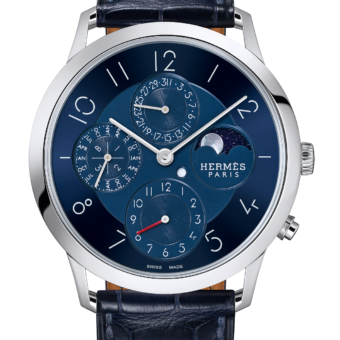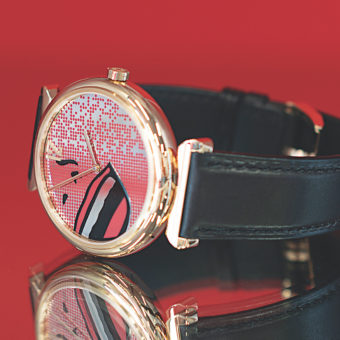Is there such thing as Paul Newman fatigue in the contemporary watch auction sphere?
In a little over 24 hours, we’ll once more have a chance to see how far Daytona mania has come in the past few years. Lot #17 in tomorrow night’s Christie’s “An Evening of Exceptional Watches” auction is a first-rate example of a Rolex Paul Newman Mark 1 Panda Dial Ref. 6263 chronograph circa 1969. The current estimate is set between $500,000 and $1,000,000, with many experts and collectors assuming it will settle closer to the latter figure than the former. The watch comes from its original owner who purchased the watch new in Bern, Switzerland in 1971 while touring Europe on motorcycle. The condition is superb, the dial in particular in beautiful shape, and it features the original crown, pushers, and bezel.
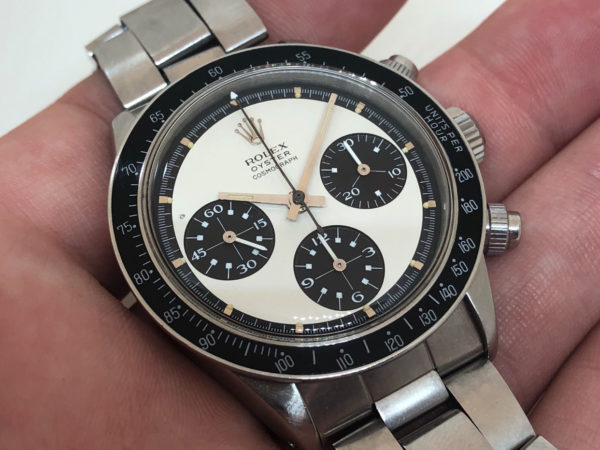
Other than the Paul Newman Mark 1, which will surely dominate social media feeds once the bidding goes live, we have five other lots worth keeping an eye on that range from a contemporary Patek that is emblematic of the seemingly unstoppable force that is today’s Nautilus market, a Ulysse Nardin with an uncharacteristic movement finish, and a Rolex Big Crown Submariner with an “Explorer” dial and an intoxicating provenance filled with Arctic adventure.
First, a few honorable mentions:
One of the first few lots is a Zenith El Primero A386, otherwise known as the first self-winding chronograph when it was released in 1969, in prime condition. If I was a betting man, I would keep an eye on these to rocket in price over the next decade as their historical value becomes fully realized. The estimate is currently set between $12,000 and $18,000 (anyone have a spare $15k to lend me?).
There are multiple fantastic pocket watches up for sale with two, in particular, standing out. A pocket watch with a Zenith movement that was gifted to the prominent Yiddish writer, Sholem Aleichem, best known for Fiddler on the Roof, and one passed down by the founder of Tiffany & Co., Charles L. Tiffany.
Other than that, there are a number of compelling Rolex, Patek Philippe, and Omega Speedmaster models, both vintage and contemporary, a pair of interesting Heuer Autavia GMTs (see here and here), a military green Porsche Design from 1985, and an Abercrombie & Fitch-branded, Heuer-signed Seafarer chronograph that are all worth checking out.
Omega Speedmaster “Broad Arrow” Reference 2915-1
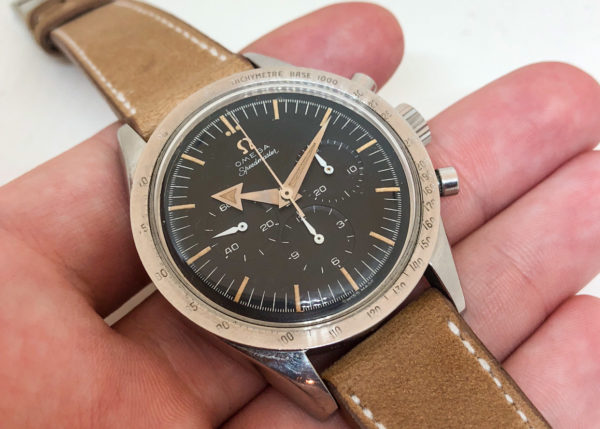
The Omega Speedmaster “Broad Arrow” Ref. 2915-1 (Lot #9) is one of those classic timepieces that is revered by all for its heritage but virtually unattainable due to its scarcity and the price it commands when available. This is the original Speedmaster that was released a full 12 years prior to the “Moonwatch” touching lunar ground in 1969. Dubbed CK 2915-1, it soon became known as the “Broad Arrow” thanks to its hour hand. Since this initial release, the Speedmaster has inspired a massive following both in and out of the watch world (#speedytuesday, anyone?), and Reference 2915-1 is the reason why. Inside, you’ve got the original Caliber 321 movement, the large Broad Arrow hour hand (replaced by dauphine hands in 2915-3 and eventually baton hands), a tachymeter scale on the steel bezel, and the distinguishable straight lug case. A similar model on bracelet sold for over $275,000 at Bukowski’s in Sweden in October of 2017, so it’s no wonder that many have this version beating its estimate of $150,000 to $200,000. More details here.
Patek Philippe Reference 5029
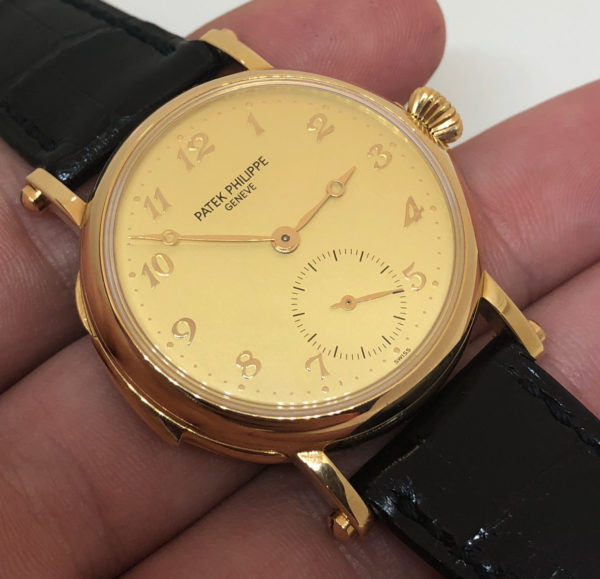
The minute repeating Patek Philippe Ref. 5029 (Lot #45) was originally brought to market to commemorate the opening of a new Patek Philippe manufacture in Geneva with only 30 total models being produced. Of those 30, there were 10 in platinum, 10 in rose gold, and 10 in yellow gold. And, of that small amount, only five are thought to have been produced with a champagne dial like the watch up for bid tomorrow night. Speaking as someone who isn’t the biggest fan of solid, yellow-gold watches, this 5029 is drool-worthy in every way. The case of this specific model was built by the celebrated case maker Jean-Pierre Hagmann, whose initials are stamped on the inside of the hinged case back. Featuring the self-winding, minute repeating Calibre R27PS, the watch has applied gold Breguet numerals, Breguet hands, and an engraving on the case back highlighting the 1997 factory opening. The estimate is currently set between $350,000 and $550,000. More details here.
Ulysse Nardin Reference 7536-1
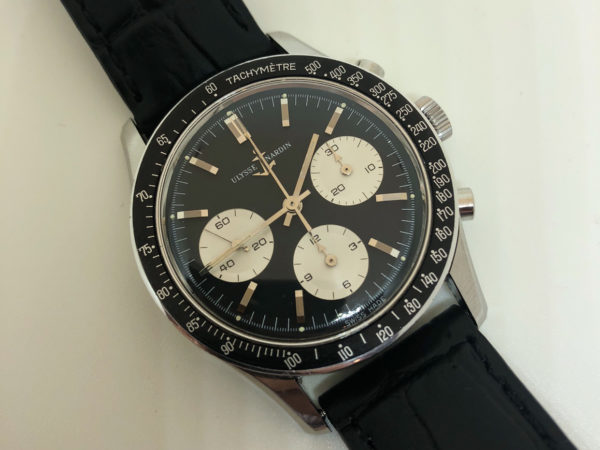
Released in 1966, this Ulysse Nardin Ref. 7536-1 (Lot #4) is a highly-sought after reverse panda chrono that bears a strong resemblance to a Rolex Daytona. This specific watch differs from previous UN models that have come up to auction by featuring a distinctive perlage finish on the movement compared to the customary Côtes de Geneve. Also worth mentioning is the arrow-tipped hands on the hour and minute registers, an uncommon layout that adds some personality. The final bid is estimated to land somewhere between $25,000 and $45,000. More details here.
Patek Philippe Reference 5976/1G-001
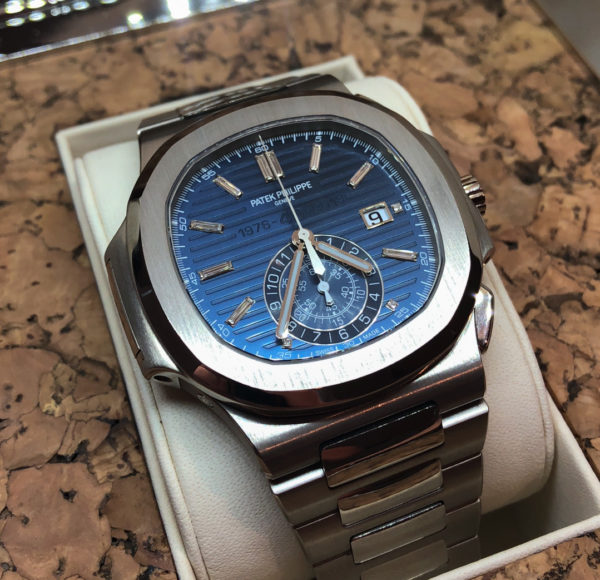
First shown and released in 2016, the Patek Philippe 5976/1G-001 (Lot #70) will be an interesting litmus test to see just how absurd the current Nautilus market currently is. Other than Rolex Paul Newman Daytonas, as previously mentioned, it would be hard to find a more difficult timepiece to get a hold of. Up for bid tomorrow is a self-winding, flyback chronograph timepiece that was one of two Nautilus’s meant to celebrate the 40th anniversary of its original design. The traditional vertical satin finish and shiny chamfers on the bezel, plus the alternating matte and mirror polish on the bracelet links are all here. As is the enlarged chronograph monocounter subdial at 6 o’clock that was originally seen in the 2006 predecessor, Reference 5980. Its three concentric scales include a 12-hour counter on the outside, a minute counter from 1 to 30 in the middle, and another minute counter from 31 to 60 on the inside. Flawless baguette and princess-cut diamonds are used for the applied hour markers. The horizontal Nautilus-style embossed pattern decorates the dial and the anniversary citation “1976–40–2016” can be found on its upper half. A look at the watch’s Certificate of Origin confirms that this specific timepiece didn’t leave the brand until January 8, 2018, meaning it almost immediately ended up in the hands of Christie’s providing us with an interesting case study of the market value for pre-owned Nautilus models. Upon its initial release, the Ref. 5976/1G-001 retailed for a touch under $100,000. The current estimate for this piece is set to land in between that number and $150,000. If it beats that estimate, which it has a chance of doing, we could see even further growth in what has become a seemingly unstoppable goliath within the watch industry. More details here.
Rolex Submariner Big Crown with an “Explorer” Dial and Red Depth Rating
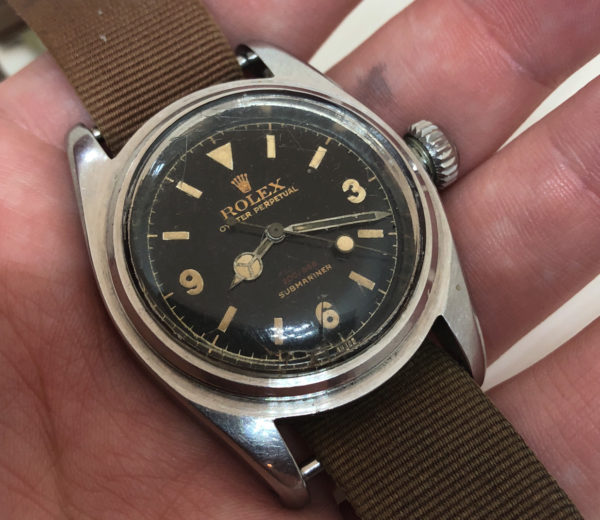
This stainless steel Rolex Submariner Big Crown Ref. 6538 (Lot #95) with an “explorer” dial (meaning Arabic numerals at 3, 6, and 9 o’clock, a configuration typically seen in Rolex Explorer models) isn’t just notable for the James Bond connection, but for the rare ‘meters first’ depth rating of “200/660” in red print rather than white and the adventures its original owner, an Australian seaman named John Simpson, took it on. This is his story, told to Christie’s by Simpson’s son, who is the one offering the watch for auction.
“My father, John Simpson, started work as a Seaman on Australian Merchant Ships from the mid-1940’s through the early 1950’s during and post Second World War hostilities, traveling the globe stopping in obscure ports from Christmas Island to Vladivostok. During a Seaman’s strike in 1953, he was “paid off” a ship in Vancouver, British Colombia.
His first afternoon on dry land, he walked passed what appeared to be an electrical supply house with a “help wanted” poster in the window. He found the shop manager in the back of the warehouse and asked if the position had already been filled. The man said “no” and asked if John could splice cable. When he said “yes”, the man asked if he could weld, and again John said “yes”. The man then asked, “Have you ever run men?” and John replied “a few” so the man asked “How many?” and John said, “75-100 or so”. The man then said, “how do you feel about the Arctic”, and John replied, “I hadn’t much thought about it.” So the man asked, “How do you feel about Arctic pay?” John said, “I hadn’t much thought about that either, but it doesn’t sound like a bad thing.” The man told him to come back in the morning and they would sort out a job for him.
John soon found himself running crews of men for Canadian Aviation and Electronics assembling and painting large radio towers for the “DEW (Distant Early Warning) Line” above the Arctic Circle for the Canadian and U.S. militaries and helped develop techniques to complete those assemblies in about one third of the scheduled time frame. His relaxed Australian attitude toward challenges and “Can Do” personality made him popular with the men and the management. He was often transported to other radar bases to advise on the construction of various structures.
A few months later on a quick trip back down to Vancouver, John stopped into a watch shop because he had recently broken his current watch in the North. He asked the man if he had a sturdy watch that was also waterproof because he enjoyed waterskiing and skin (scuba) diving when in warmer weather. The man picked out a standard Rolex Submariner from the case and handed it to John to try on. John asked the shopkeeper about the cost who told him it was $100 Canadian Dollars. John said, “That’s a bit rich for my blood mate,” gently handed it back to the shopkeeper and left the store. He looked around the city for the day but was unable to find anything that matched the ruggedness of the Submariner so he reconsidered the purchase. After all, he was being well paid, was still a bachelor at the time, and thought he could justify the higher cost as he needed a hearty replacement watch before heading back to work in the Arctic.
At the end of that day, John returned to the first watch shop to see if the standard Submariner was still available, tried it on, and agreed to purchase it for $100 CAD. The shopkeeper asked John if he wanted to see something else before he completed his purchase, so John said, “why not?” The shopkeeper showed him another Submariner with a few subtle differences on the dial from the one he had on his wrist. John said, “I like the numbers and shiny writing on the dial, the red depth is also nice. How much for that one?” The man told him $150 CAD so John handed him back the watch and said, “That’s still a bit rich for my blood mate.” The man said, “But it’s a special one. Some British guy ordered it six months ago then didn’t come back for it.” John said, “I’ll give you the same for it as the one in my hand.” The man said, “But it’s a special order.” John said, “Yes, but you still have it here in your case. That’s ok mate, I’ll just take the one with the dots on the dial.” The shopkeeper paused for a while, then agreed to sell the special one to John for the price of the standard Submariner because he didn’t know if he would be able to sell it to anyone else.
Happy with his purchase, John wore the watch daily from the date of purchase in 1956 while working in the Arctic for another couple of years. At some point, he received a notice from Rolex asking him to return the watch to have the radium removed from the dial, but he had missed the window for a free service while away in the North and never sent the watch back.
He eventually returned to Vancouver and met a nice Dutch girl and the couple was married not long after. They moved back to Australia where John worked as a tradesman for a time, before eventually immigrating to the United States in the early 1960’s. John worked as a Union House Painter from that time on. He removed the bezel from the watch and put it in a drawer in the mid 60’s because he complained to his wife that paint drips would get down in between the bezel and the crystal making it hard to turn and it was easier to clean without the bezel on. He continued wearing his watch without the bezel every day until he retired in the mid-1990’s when he then wore the watch in his retirement activities, fishing, sailing, motorcycling, diving and walking on the beach until his passing in mid-2017, when the watch [was then] passed to his son. A friend of John’s son noticed him wearing the watch one day and said, “That looks pretty old, does it still keep time?” John’s son said, “yes.” The friend said, “It looks different from the other ones I’ve seen. You should have it looked at instead of wearing it every day.”
As the last lot in the auction, it has an estimate of $500,000 to $1,000,000. You can read more about the watch and its provenance here.
Christie’s “An Evening of Exceptional Watches” auction will start promptly at 6:00 PM EST tomorrow. You can view the rest of the 95 lots here.


